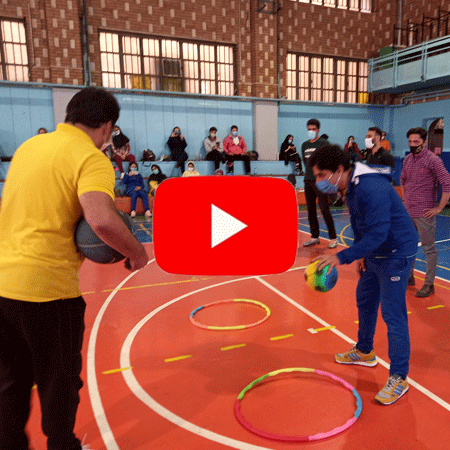
Instructor
Dr. Amin Gholami
What is Active Play?
Active play includes any activity that involves moderate to vigorous bursts of high energy. Put simply, if it raises their heart rate and makes them "huff and puff", it’s active play.
For babies, active play is less intense. It includes activities such as reaching out to touch something, rolling over, or balancing in a sitting position.
Babies and children should enjoy active play every single day. It's this kind of routine that will help your kids form lifelong habits of daily physical activity.
- Active play is essentially physical activity with spontaneous and occasional bursts of high energy. It can occur indoors or outdoors, alone or with friends and family. Even before children can walk, they can start playing. As they get older and learn more skills, opportunities for active play increase.
The different ways to active play
Active play can be done in lots of ways. It can be structured or unstructured. It can happen indoors or outdoors. Children can play alone or with others.
Structured play has rules, time limits, and equipment and includes organized sport, like swimming lessons and kinder gym.
Structured play is usually an organized form of play and it may involve rules, time limits, and special equipment. Some examples include playing sports, going to playgroups or kinder gym, and dance or swimming lessons.
Unstructured play is more spontaneous and can be as simple as walking with the kids to the park or encouraging them to use their imaginations while playing.
Unstructured play is less restricted and often made up on the spot by those playing. It can include such things as playing alone or with friends and family, imaginative play, going for a walk, dancing to music at home, or playing in the park.
Why is active play so important?
Active play is important for your child’s health, growth and development. Regular activity and play have many benefits for children. These include • building strong hearts, muscles, and bones. • fostering social interaction skills. • developing movement and coordination. • improving thinking skills. • encouraging self-esteem. • developing emotional skills.
WHY DO WE TEACH FUNDAMENTAL MOVEMENT SKILLS (FMS)?
The development of FMS is an important step towards ensuring lifelong involvement in physical activity. Without proficiency in skills like throwing, catching, kicking, leaping, and balancing, children are less likely to explore the range of options available to them to establish and maintain active lifestyles. The development of movement skills occurs sequentially, with proficiency in FMS forming the basis for the development of more advanced sport-specific skills.
Research suggests that children who are competent in FMS are more likely to enjoy sports and activities and to develop a lifelong commitment to physical activity. Research also suggests that children who do not master FMS are more likely to drop out of physical activity in later life.
Children who have achieved proficiency in FMS have been found to have better self-esteem, socialization skills, and a more positive attitude towards physical activity. Research indicates that the improvement in self-esteem and confidence in performing FMS has a flow-on effect on other areas of a child’s education. For example, improvement in confidence in physical coordination has been found to help develop proficiency in reading and writing.